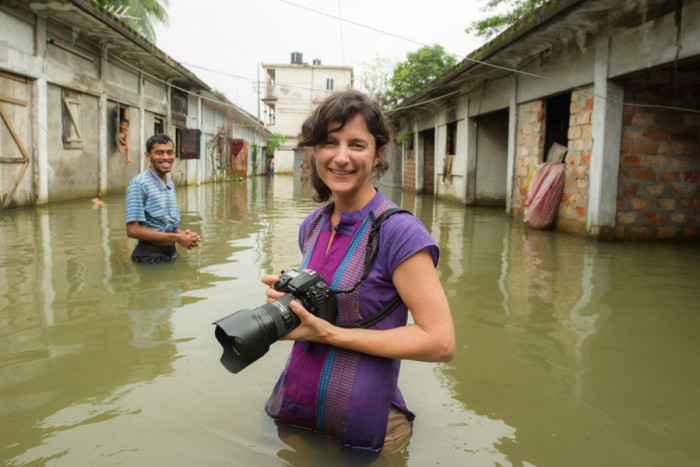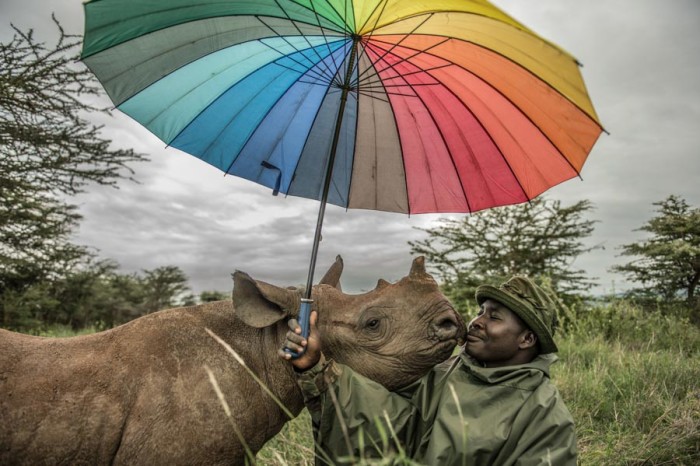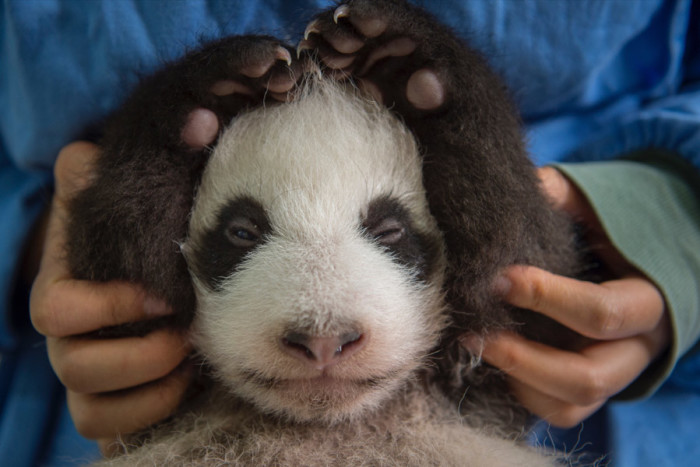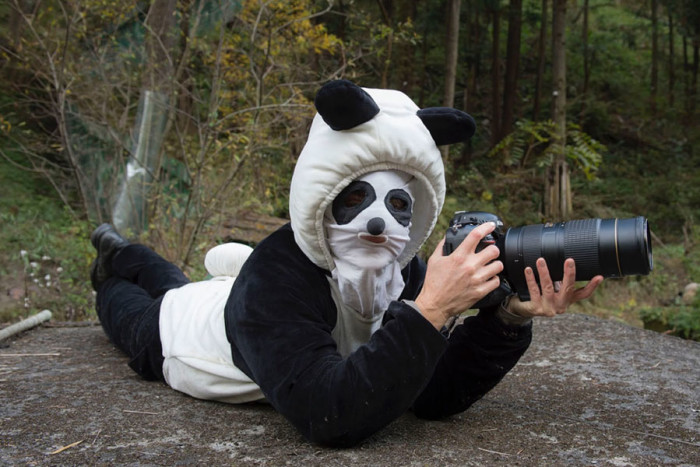
Every journalist has fantasized about traveling to remote corners of the globe to document far-flung cultures and ecosystems.
But how many of us actually get the chance to get out from behind our desks and explore our world?
Ami Vitale has one of those dream jobs. It’s taken her to over 90 countries, living in mud huts and war zones, contracting malaria and even snuggling with a sea of baby pandas.
She’s in town this week to share what a day in the life of a National Geographic photographer is all about.
Vitale has been celebrated as a Nikon Ambassador, and won the honor of International Photographer of the Year. But she wasn’t always a fan of the flashing lights, and admits she was actually quite camera shy as a young girl.
“My parents wanted to help me and thought dance classes, or putting me in front of a camera, would give me more courage. Well, that didn’t quite work out,” said Vitale.
But it did spark a curiosity that eventually led her to the other side of the lens, where she found the strength to encourage others.
“I thought photography was empowering me. What I never imagined was that by empowering myself, I was also empowering the people I was photographing,” she said.

After covering the border conflict between India and Pakistan in Kashmir for four years, Ami got a call from National Geographic that would eventually shift her focus towards wildlife photography.
“I don’t want to minimize the importance of what we do as conflict photographers. Stories about suffering and the human condition are important,” she says. “But the stories which really endure don’t always have to be stories of the horrors of the world.”
Working for National Geographic led Vitale on a trip to Kenya to document an indigenous community desperately seeking to protect and save the last few white rhinos on earth.
She also recently spent time profiling China’s efforts to reintroduce giant pandas into the wild.
“It was very difficult getting access to this story as a foreigner,” she said. “They are trying to put this cute, cuddly, iconic animal that doesn’t even look real or wild back into the wild. Once I saw the dedication of those involved like Director Zhang Hemin, better known as the “Papa Panda” I was blown away.”
Giant pandas once roamed freely throughout Southern and Eastern China, but human development has now isolated them to just 1,864 pandas living in the wild in six mountain ranges in China’s Sichuan, Shaanxi and Gansu provinces.

Apparently pandas have fairly high standards for choosing a mate, and at one time researchers thought they just weren’t easily aroused.
“Some scientists tried extreme methods, such as showing the pandas videos of giant pandas mating and giving the males Viagra,” she said.
During Vitale’s time in China, she witnessed Zhang’s team go to great lengths to ensure populations born in captivity were successfully released into the wild.
“In the beginning, they either died or tried to return home. They were too attached with their human nannies,” Vitale says. So Director Zhang Hemin decided to step outside the box and take a different approach by raising pandas that never set eyes on a single human.
“To accomplish that, the keepers wear a full panda suit scented with urine,” Vitale said. She even went so far as to wear one of the suits herself to photograph the story.
Have those of us trapped behind the walls of our cubicles glorified travel journalism careers, or is working as a National Geographic photographer everything we imagine it to be?
Vitale assured me it definitely has it’s perks.
“Nothing beats being surrounded by 16 baby pandas or sleeping with a baby orphaned rhino,” she said. “But the reality is that these are not ordinary moments and there is a lot of sheer hard work and grit needed to do this job.”

She also admits it can get lonely.
“It sounds romantic to travel the world but you must be emotionally self reliant,” she says. “I look back on experiences I had and now wonder how I got through some of them. They were sometimes unimaginable, often lonely and occasionally utterly terrifying.”
It doesn’t sound like Vitale will be hanging up her camera and urine-scented panda suit anytime soon. She says the people she’s met and experiences she’s had have changed her life. Not to mention the contribution she hopes her work can have in preserving the wonders of the world she gets to photograph.
“When we undervalue nature, when we turn our backs on nature, it can have a surprisingly powerful impact on us,” said Vitale.
If you’re interested in hearing Ami’s story straight from the source, don’t miss her National Geographic series Rhinos, Rickshaws, & Revolutions: My Search for the Truth, at Benaroya Hall for three nights March 20th to 22nd. Tickets available here.
This story has been updated to correct that Vitale didn’t actually sleep with the baby pandas, she just snuggled with them. Also, there are now only three white rhinos left, not seven, as the previous version stated.


Interesting, but I would have liked to see more images.